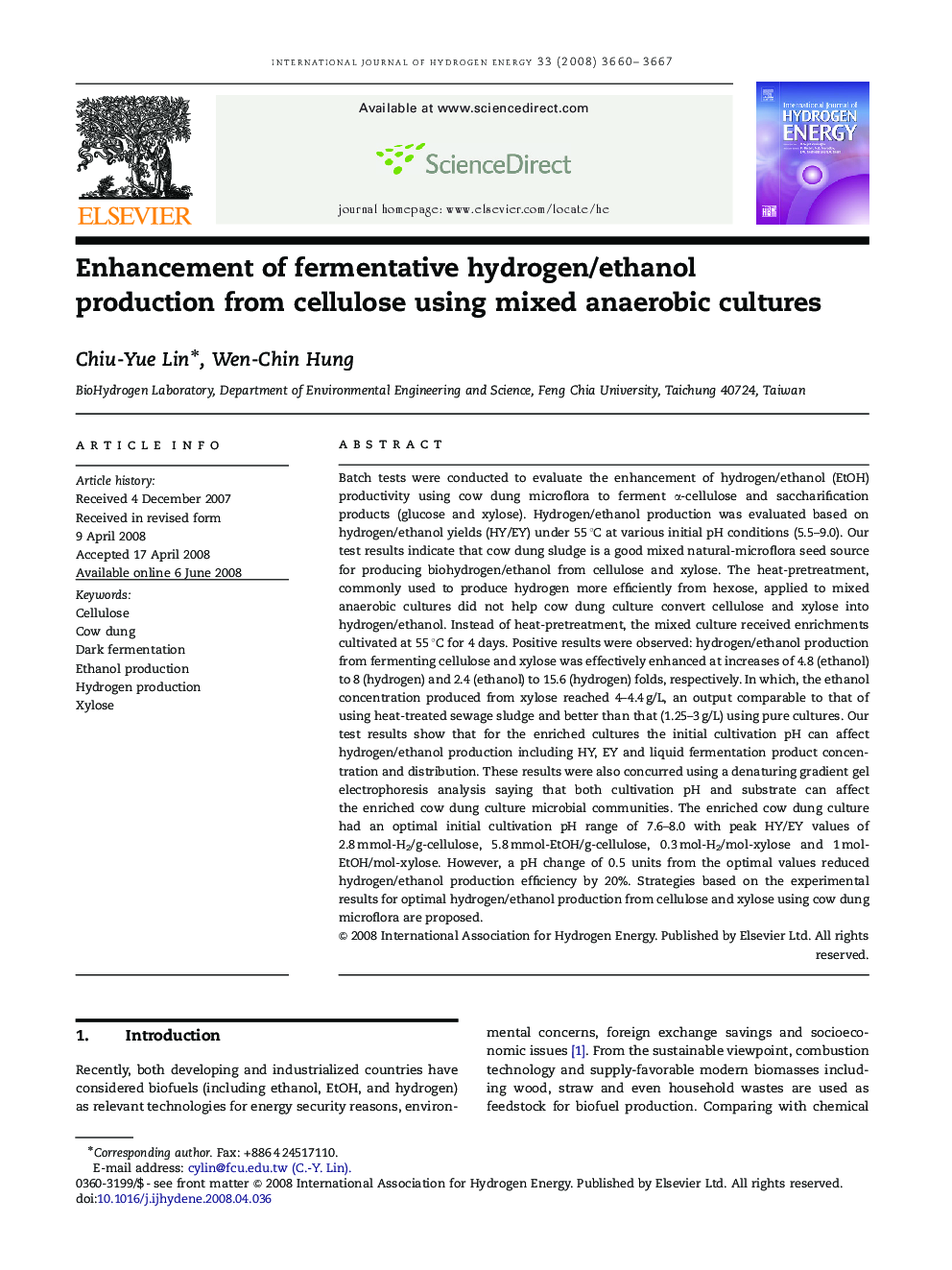| Article ID | Journal | Published Year | Pages | File Type |
|---|---|---|---|---|
| 1283654 | International Journal of Hydrogen Energy | 2008 | 8 Pages |
Batch tests were conducted to evaluate the enhancement of hydrogen/ethanol (EtOH) productivity using cow dung microflora to ferment α-cellulose and saccharification products (glucose and xylose). Hydrogen/ethanol production was evaluated based on hydrogen/ethanol yields (HY/EY) under 55 °C at various initial pH conditions (5.5–9.0). Our test results indicate that cow dung sludge is a good mixed natural-microflora seed source for producing biohydrogen/ethanol from cellulose and xylose. The heat-pretreatment, commonly used to produce hydrogen more efficiently from hexose, applied to mixed anaerobic cultures did not help cow dung culture convert cellulose and xylose into hydrogen/ethanol. Instead of heat-pretreatment, the mixed culture received enrichments cultivated at 55 °C for 4 days. Positive results were observed: hydrogen/ethanol production from fermenting cellulose and xylose was effectively enhanced at increases of 4.8 (ethanol) to 8 (hydrogen) and 2.4 (ethanol) to 15.6 (hydrogen) folds, respectively. In which, the ethanol concentration produced from xylose reached 4–4.4 g/L, an output comparable to that of using heat-treated sewage sludge and better than that (1.25–3 g/L) using pure cultures. Our test results show that for the enriched cultures the initial cultivation pH can affect hydrogen/ethanol production including HY, EY and liquid fermentation product concentration and distribution. These results were also concurred using a denaturing gradient gel electrophoresis analysis saying that both cultivation pH and substrate can affect the enriched cow dung culture microbial communities. The enriched cow dung culture had an optimal initial cultivation pH range of 7.6–8.0 with peak HY/EY values of 2.8 mmol-H2/g-cellulose, 5.8 mmol-EtOH/g-cellulose, 0.3 mol-H2/mol-xylose and 1 mol-EtOH/mol-xylose. However, a pH change of 0.5 units from the optimal values reduced hydrogen/ethanol production efficiency by 20%. Strategies based on the experimental results for optimal hydrogen/ethanol production from cellulose and xylose using cow dung microflora are proposed.
